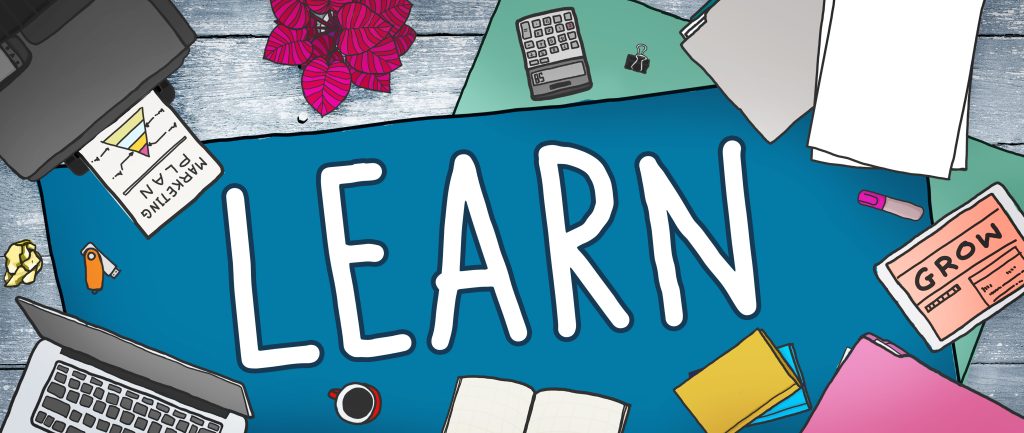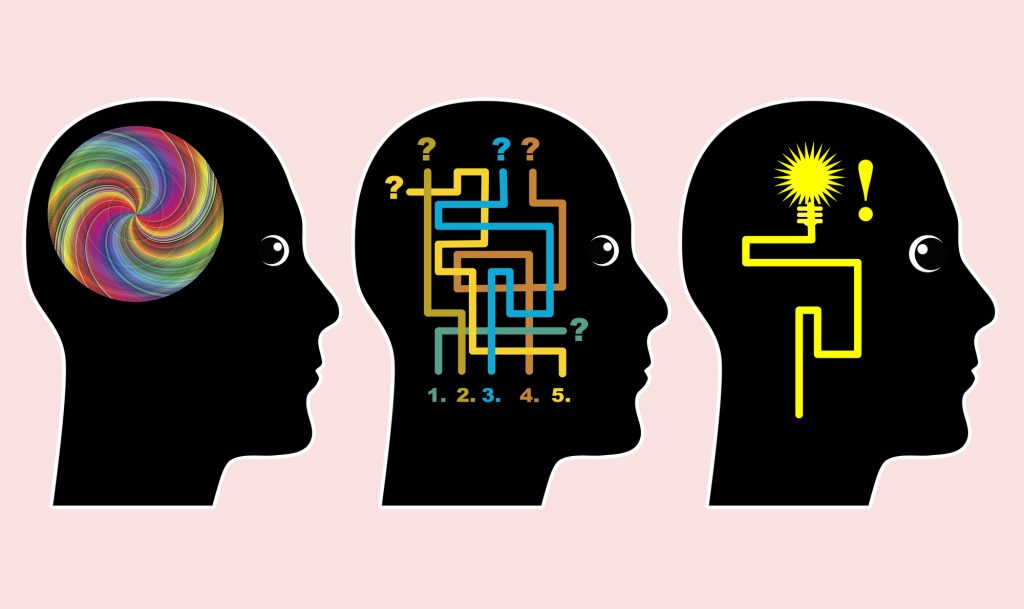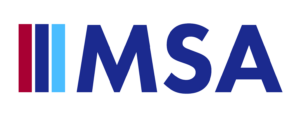
Learning is a complex process that involves a diverse range of cognitive and behavioral activities. In order for students to achieve the best possible outcomes, it is important to identify your own personal learning style. There are several different learning styles recognized by educators, each with its own unique characteristics and strategies. By understanding your preferred learning style, you can tailor your study methods to optimize your learning potential. In this blog post, we will explore the four most common learning styles, and provide tips on how to use them most effectively.
What Are The Different Learning Styles?
One popular model for identifying learning styles is the VARK model, which categorizes learners as either Visual, Auditory, Reading/Writing, or Kinesthetic.
VARK
- • Visual
- • Auditory
- • Reading & Writing
- • Kinesthetic
How Can I Identify My Learning Style?
To identify your learning style, it is important to reflect on your personal preferences when it comes to learning. Do you find that you learn best when you read information on a page, or would you rather listen to a lecture and take notes? Do you need to physically engage with your learning material, such as through hands-on activities, or do you prefer to visualize concepts in your mind? By asking yourself these types of questions, you can start to recognize patterns in your learning behavior and determine which learning style best suits you. You can also find out what your main learning style is by taking The VARK Quesetionnaire.
In the following sections, we will explore each of the four learning styles in more detail and provide tips on how to use them effectively.
Visual Learners
Visual learners are those who learn best through the use of images, videos, diagrams, and other visual aids. They prefer to see information presented in a clear and organized way, and may struggle with large blocks of text or spoken lectures without accompanying visuals. Visual learners benefit from using color coding, mind maps, and other visual aids to help them organize and remember information. They may also find it helpful to create their own diagrams or illustrations to explain complex concepts. To maximize their learning potential, visual learners should seek out visual aids and resources, and avoid distractions such as noisy environments or cluttered workspaces.
What Comes Easy:
- • Visual learners can easily process and remember information that is presented through images, charts, and diagrams.
- • They can quickly grasp complex ideas by seeing them visually.
- • They have the ability to create mental images to remember information.
What Takes More Work:
- • It can be difficult for visual learners to understand information that is presented only through spoken words.
- • They may struggle to read and retain large amounts of text.
- • They may become easily distracted by visual stimuli in their environment.
Auditory Learners
Auditory learners process information best through sound and spoken words. They prefer to learn through lectures, discussions, and verbal explanations. They may struggle with reading comprehension or written instructions. To maximize their learning potential, auditory learners should seek out opportunities to listen to lectures, podcasts, or audiobooks. They may also benefit from studying in a quiet environment and repeating information out loud to themselves. Group discussions or study groups can also be effective for auditory learners to engage in verbal exchanges and retain information through conversation.
What Comes Easy:
- • Learners can easily remember information if it is presented through sound.
- • They can understand complex ideas by listening to lectures, speeches, or conversations.
- • They can benefit from group discussions and debates.
What Takes More Work:
- • It can be difficult for auditory learners to learn from written materials.
- • They may be easily distracted by background noise or other sounds.
- • They may struggle to recall information that was not presented through sound.
Reading & Writing Learners
Reading and writing learners, also known as verbal-linguistic learners, learn best through written texts and written exercises. They enjoy reading and writing, and are able to absorb information quickly through reading and taking extensive notes. They may struggle with oral presentations or lectures without accompanying written materials. To maximize their learning potential, reading and writing learners should take detailed notes, create outlines, and summarize information in their own words. They can also benefit from practicing writing exercises and engaging in discussions that require them to articulate their ideas in writing.
What Comes Easy:
- • These learners can easily comprehend written material and can quickly process information by reading.
- • They can take notes and organize their thoughts effectively.
- • They can improve their learning by writing summaries, essays, and research papers.
What Takes More Work:
- • It can be challenging for these learners to understand complex ideas that are not presented in written form.
- • They may struggle to learn from oral presentations.
- • They may become easily fatigued from reading and writing for extended periods.
Kinesthetic Learners
Kinesthetic learners, also known as tactile (touch) learners, learn best through physical movement and hands-on experiences. They prefer to learn by doing and may struggle with long periods of sitting still and listening to lectures. Kinesthetic learners benefit from hands-on activities, experiential learning, and role-playing exercises that allow them to physically engage with the material. They may also benefit from taking frequent breaks, using fidget toys or stress balls to keep their hands busy, and studying in a space that allows them to move around and use their body. To maximize their learning potential, kinesthetic learners should seek out opportunities for hands-on learning and physical activity, such as experiments, simulations, and field trips.
What Comes Easy:
- • Kinesthetic learners are able to retain information better when they physically engage with the material.
- • They are often able to solve problems more creatively by using their hands and bodies.
- • Kinesthetic learners tend to have strong motor skills and hand-eye coordination, which can be useful in certain activities and professions.
What Takes More Work:
- • Kinesthetic learners may struggle in traditional classroom settings that rely heavily on lectures and sitting still for long periods.
- • They may have difficulty learning abstract concepts or information that cannot be physically manipulated.
- • Kinesthetic learners may require more resources or materials to support their hands-on learning style, which may not always be available.

Can I Combine Learning Styles?
While there are different types of learning styles, most people do not fit into just one category. Rather, they prefer a combination of learning styles. For example, a student may be primarily a visual learner, but also benefit from hands-on activities to reinforce their learning. Another student may prefer to read and write, but also benefit from verbal explanations. By understanding their own unique combination of learning styles, individuals can tailor their approach to learning and maximize their potential for success. It’s important to note that everyone’s learning style is unique, and there is no one-size-fits-all approach to learning.
How Can I Create An Effective Learning Environment?
Understanding your learning style is the first step to creating a learning environment that caters to your needs. Once you know your learning style, you can apply techniques that align with it to enhance your learning experience. Here are some strategies that you can use to create a learning environment that caters to your learning style:
- 1. Visual learners: Visual learners prefer to learn by seeing. To create an environment that supports your learning style, you can use visual aids like diagrams, charts, and pictures. You can also use highlighters and color codes to organize your notes and make connections between ideas.
- 2. Auditory learners: If you are an auditory learner, you may benefit from listening to lectures, discussions, or podcasts. To create a conducive learning environment, you may want to use headphones to block out external sounds and distractions. You can also record lectures and play them back later to reinforce your learning.
- 3. Reading & Writing learners: If you are a reading and writing learner, you may prefer to take notes and read texts. To create an environment that supports your learning style, you can use a quiet space to read and write without distractions. You can also use different fonts and colors to differentiate between ideas and concepts.
- 4. Kinesthetic learners: Kinesthetic learners prefer to learn by doing. To create an environment that supports your learning style, you can participate in hands-on activities like experiments, role-playing, or simulations. You can also take breaks to move around and use physical objects to reinforce your learning.
By creating a learning environment that aligns with your learning style, you can enhance your ability to retain information and improve your overall academic performance.
What Does This All Mean For Me?
Understanding your learning style is an important step towards maximizing your potential for success. By identifying your preferred learning style, you can create a learning environment that caters to your needs, enhances your ability to retain information, and improves your overall academic performance. Whether you are a visual, auditory, reading and writing, or kinesthetic learner, there are strategies that you can use to optimize your learning experience. By applying these techniques, you can achieve your academic goals with greater ease and confidence.
Washington Technical Institute
Washington Technical Institute’s fully online certificates can be completed in a matter of months, with daily or bi-weekly start dates. Such flexible start dates make these programs unique and much more accessible for our students. Most of our certificates can be earned as a self-paced program, meaning that you can work at your own pace to complete your work, even finishing early if you have the time and motivation to do so. An additional benefit of WTI’s programs is that we offer affordable pricing and monthly payments to help our students leave school without debt.
Although our goal is to help our students graduate their programs with little to no debt, we also recognize that some students might need to utilize a loan for their educational investment. We are excited to announce our partnerships with Meritize Financial Assistance, Climb Credit, or Ascent, student lending companies focused on financing career-building programs.If you’re ready to enroll and start working on a plan for the personal and professional benefit of professional development, you can register for your program online through our website. Still have questions about our programs? Feel free to call us at 800-371-5581 or text us at 952-465-3702 to speak with an admissions specialist.


